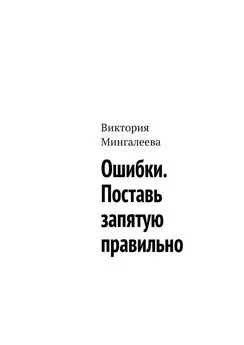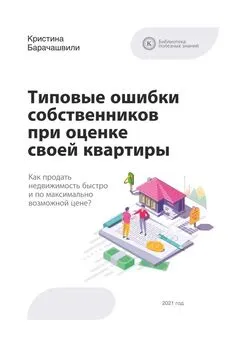Ив Жангра - Ошибки в оценке науки, или как правильно использовать библиометрию
- Название:Ошибки в оценке науки, или как правильно использовать библиометрию
- Автор:
- Жанр:
- Издательство:ООО «ЛитРес», www.litres.ru
- Год:2018
- ISBN:нет данных
- Рейтинг:
- Избранное:Добавить в избранное
-
Отзывы:
-
Ваша оценка:
Ив Жангра - Ошибки в оценке науки, или как правильно использовать библиометрию краткое содержание
Ошибки в оценке науки, или как правильно использовать библиометрию - читать онлайн бесплатно полную версию (весь текст целиком)
Интервал:
Закладка:
23
23По истории статистики и исследований и разработок (R&D) см.: Benoît Godin, Measurement and Statistics on Science and Technology (London, Routledge, 2005).
24
24ОЭСР (1963), “Méthode type proposée pour les enquêtes sur la recherche et le développement expérimental. La mesure des activité́s scientifiques et techniques,” DAS/PD/62.47, Direction des affaires scientifiques, Paris. В настоящее время этот труд циркулирует в шестом издании.
25
25Derek J. de Solla Price, “The scientific foundations of science policy,” in Nature , 206, 17 avril 1965, pp. 233–238.
26
26Francis Narin, Evaluative Bibliometrics. The Use of Publication and Citation Analysis in the Evaluation of Scientific Activity (Cherry Hill, N. J.: Computer Horizons Inc., 1976).
27
27Ghislaine Filliatreau (dir.), Indicateurs de sciences et de technologies , rapport de l’Observatoire des sciences et techniques (Paris: Économica, 2010).
28
28Yehuda Elkana, Joshua Lederberg, Robert K. Merton, Arnold Thackray & Harriet Zuckerman (éd.), Toward a Metric of Science. The Advent of Science Indicators (New York: John Wiley & Sons, 1978).
29
29Gerald Holton, “Can science be measured?”, in Y. Elkana et al ., op. cit ., pp. 39–68; Stephen Cole, Jonathan R. Cole & Lorraine Dietrich, “Measuring the cognitive state of scientific disciplines,” idem, ibidem , pp. 209–252; Eugene Garfield, Morton V. Malin et Henry Small, “Citation data as science indicators,” idem, ibidem , pp. 179–207.
30
30См.: Y. Gingras, Sociologie des sciences (Paris: PUF, 2013), pp. 5–6.
31
31См.: T. D. Wilson, “The nonsense of ‘knowledge management’,” Information Research , 8, octobre 2002, article no 144, http://InformationR.net/ir/8–1/paper144.html.
32
32См.: Isabelle Bruno et Emmanuel Didier, Benchmarking: L’État sous pression statistique (Paris: La Découverte, 2013).
33
33См.: Éric Archambault, David Campbell, Yves Gingras & Vincent Larivière, “Comparing bibliometric statistics obtained from the Web of Science and Scopus,” in Journal of the American Society for Information Science and Technology , 60, 2009, pp. 1320–1326.
34
34См.: Keith Pavitt, “Patent statistics as indicators of innovative activities: possibilities and problems,” in Scientometrics, 7, 1985, pp. 77–99.
35
35См.: Francis Narin, Dominic Olivastro, “Linkage between patents and papers: An interim EPO/US comparison,” in Scientometrics , 41, 1998, pp. 51–59.
36
36См. переписку между Гарфилдом и социологом Гарриет Цукерман (Harriet Zuckerman) в: P. Wouters, “The citation culture,” op. cit ., p. 102.
37
37Eugene Garfield, Irving H. Sher & Richard J. Torpie, “The use of citation data in writing the history of science,” in Institute for Scientific Information, décembre 1964; Eugene Garfield, “From the science of science to scientometrics: visualizing the history of science with HistCite software,” in Journal of Informetrics , 3, 2009, pp. 173–179.
38
38Henry Small, Physics Citation Index, 1920–1929 , Philadelphie, ISI, 2 vols, 1981; “Recapturing physics in the 1920s through citation analysis,” in Czechoslovak Journal of Physic s, 36, 1986, pp. 142–147.
39
39http://wokinfo.com/products_tools/backfiles/coss/, http://wokinfo.com/products_tools/backfiles/cos/.
40
40См.: Eugene Garfield & Irving H. Sher, “New factors in the evaluation of scientific literature through citation indexing,” in American Documentation , 14, 1963, pp. 195–201.
41
41См.: Vincent Larivière, Benoît Macaluso, Éric Archambault & Yves Gingras, “Which scientific elites? On the concentration of research funds, publications and citations,” in Research Evaluation , 19, 2010, pp. 45–53.
42
42См.: Alan E. Bayer & John K. Folger, “Some correlates of a citation measure of productivity in science,” in Sociology of Education , 39, 1966, pp. 381–390.
43
43Eugene Garfield, Irving H. Sher, “New tools for improving and evaluating the effectiveness of research,” in M. C. Yovits, D. M. Gilford, R. H. Wilcox, E. Staveley and H. D. Lemer (dir.), Research Program Effectiveness, Proceedings of the Conference Sponsored by the Office of Naval Research Washington, D. C., July 27–29, 1965 (New York: Gordon and Breach, 1966), pp. 135–146. Текст доступен в интернете: http://www.garfield.library.upenn.edu/papers/onrpaper.html.
44
44Jonathan R. Cole, Stephen Cole, Social Stratification in Science (Chicago: University of Chicago Press, 1973).
45
45См.: Perry W. Wilson et Edwin B. Fred, “The growth curve of a scientific literature,” in Scientific Monthly , 41, 1935, pp. 240–250.
46
46См.: Jack H. Westbrook, “Identifying significant research,” in Science , 132, 28 October, 1960, pp. 1229–1234.
47
47J. C. Fisher, “Basic research in industry,” in Science , 129, 19 June, 1959, pp. 1653–1657.
48
48См.: G. Nigel Gilbert, “Measuring the growth of science. A review of indicators of scientific growth,” in Scientometrics , 1, 1978, pp. 9–34.
49
49См.: Francis Narin, “Patent bibliometrics,” in Scientometrics , 30, 1994, pp. 147–155.
50
50См.: P. W. Hart, J. T. Sommerfeld, “Relationship between growth in gross domestic product (GDP) and growth in the chemical engineering literature in five different countries,” Scientometrics , 42, 1998, pp. 299–311.
51
51См.: Vincent Larivière, Éric Archambault, Yves Gingras, Étienne Vignola — Gagné, “The lace of serials in referencing practices: comparing natural sciences and engineering with social sciences and humanities,” in Journal of the American Society for Information Science and Technology , 57, June 2006, pp. 997–1004.
52
52См.: Elisabeth S. Clemens, Walter W. Powell, Kris McIlwaine, Dina Okamoto, “Careers in print: books, journals, and scholarly reputations,” in American Journal of Sociology , 101, 1995, pp. 433–494.
53
53См.: Michael M. Kessler, “Bibliographic coupling between scientific papers,” in American Documentation , 14, 1963, pp. 10–25.
54
54См.: Henry Small, “Co-citation in scientific literature: A new measure of relationship between two documents,” in Journal of the American Society for Information Science , 24, 1973, pp. 265–269.
55
55Этот график в адаптированном виде взят из: Eugene Garfield, “From bibliographic coupling to co-citation analysis via algorithmic historio-ibliography,” см. на сайте http://garfield.library.upenn.edu/papers/drexelbelvergriffith92001.pdf.
56
56См.: Matthew L. Wallace, Yves Gingras et Russell Duhon, “A new approach for detecting scientific specialties from raw cocitation networks,” in Journal of the American Society for Information Science and Technology , 60, 2009, pp. 240–246.
57
57См.: Kevin W. Boyack, Richard Klavans, Katy Börner, “Mapping the backbone of science,” in Scientometrics , 64, 2005, pp. 351–374.
58
58См.: Jean Piaget, “Le système et la classification des sciences,” in Jean Piaget (dir.), Logique et connaissance scientifique (Paris: Gallimard, 1967), pp. 1151–1224.
59
59См. изображения в: Katy Börner, Atlas of science. Visualizing what we know (Cambridge: MIT Press, 2010); а также на веб-сайте: http://scimaps.org/atlas/maps.
60
60Conseil des académies canadiennes [Совет канадских академий], Éclairer les choix en matière de recherche: indicateurs et décisions (Ottawa: Conseil des académies canadiennes, 2012).
61
61См.: Vincent Larivière, Éric Archambault, Yves Gingras, “Long-term variations in the aging of scientific literature: from exponential growth to steady-state science (1900–2004),” Journal of the American Society for Information Science and Technology, 59, 2008, pp. 288–296.
62
62См.: Matthew L. Wallace, Vincent Larivière, Yves Gingras, “Modeling a century of citation distributions,” in Journal of Informetrics , 3, 2009, pp. 296–303.
63
63См.: “Citations track the fate of cold fusion,” in New Scientist , 1713, 21 April 1990.
64
64Anthony F. J. van Raan, “Sleeping beauty in science,” in Scientometrics , 59, 2004, pp. 461–466.
65
65См.: Y. Gingras, “La carrière des publications d’Ettore Majorana. Une étude bibliométrique,” in Revue de synthèse , 134, 2013, pp. 75–87.
66
66Peter A. Lawrence, “The mismeasurement of science,” in Current Biology , 17, 2007, pp. R584–R585.
67
67См.: Y. Gingras, “Revisiting the ‘quiet debut’ of the double helix: a bibliometric and methodological note on the ‘impact’ of scientific publications,” in Journal of the History of Biology , 43, 2010, pp. 159–181.
68
68См.: Y. Gingras, “The collective construction of scientific memory: the Einstein — Poincaré connection and its discontents, 1905–2005,” in History of Science, 46, mars 2008, pp. 75–114; idem , “The transformation of physics from 1900 to 1945,” in Physics in Perspective , 12, 2010, pp. 248–265.
Читать дальшеИнтервал:
Закладка:
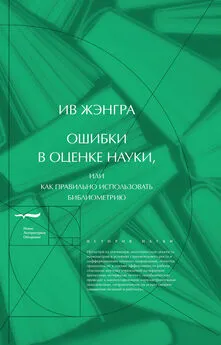


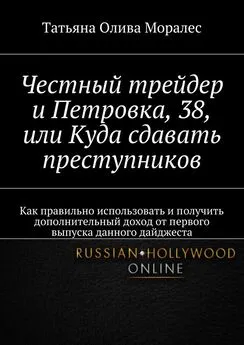
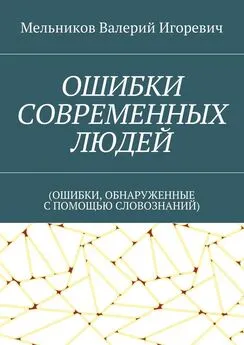
![Ив Жангра - Ошибки в оценке науки, или как правильно использовать библиометрию [калибрятина]](/books/1061749/iv-zhangra-oshibki-v-ocenke-nauki-ili-kak-pravilno.webp)

